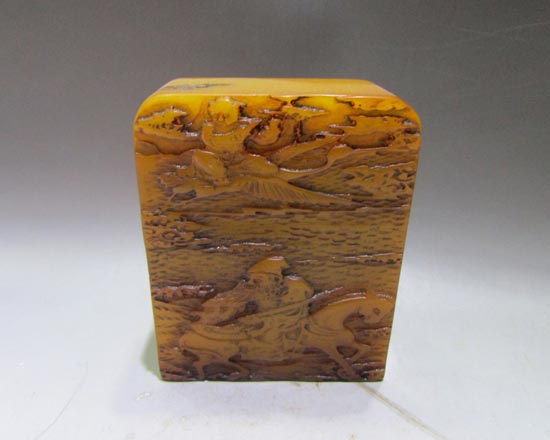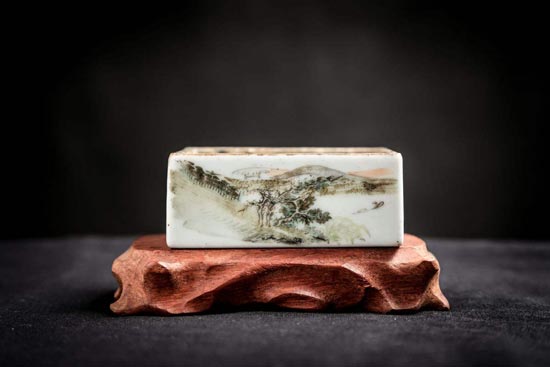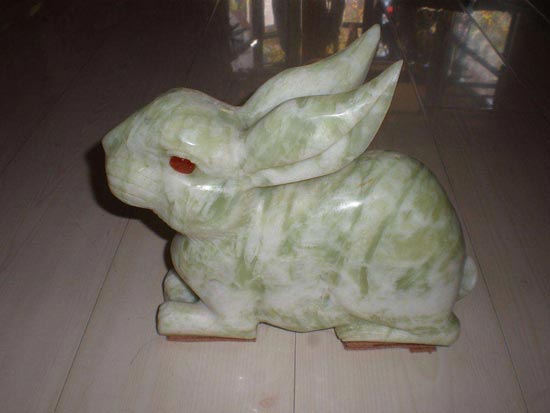How does the antique collection improve its ability to distinguish
No matter whether it is an antique dealer or a collector, you never know that you have become a master of the profession. There are several ways to learn, but no matter what kind of learning method is no exception, you must experience the practice of trading in the market.
If you don't go into the market, don't enter the antique business community, and don't integrate into this special human environment, you can't succeed. In particular, the appreciation and identification of the business experts in the industry are confidential and not taught. This requires beginners to take the initiative to contact the commercial group of antiques, which is very important for the early entry of Tibetans.
The antiques industry is different from other industries in that antiques are not ordinary goods. They need collectors to understand history, have artistic qualities, are proficient in discerning, break the age, evaluate taste, estimate prices, and understand and abide by industry rules. Because the ancient art contains rich historical and cultural knowledge, it also covers the moral qualities of traditional benevolence, righteousness, courtesy, wisdom, and trust.
If you don't understand the rules, do not follow the rules, arrogance, no modesty and prudent attitude, the business is to refuse communication and trading, and it is even more impossible to impart professional knowledge. Even if the fans accidentally bought the real antiques, if they are not humbly, the character is not good, the eyesight is not good, and no one tells you the truth and the truth. In the end, my true collection, good collection, will still be taken away by the experts. You don't sell, your child will sell. Beginners must understand that mastering the appreciation of antiques, only to see more, a large number of hands-on real things, in addition to no other more effective learning methods.

In the market, all the disadvantages are due to the incorrect learning methods described below:
1. The collectors’ mistakes are wrong in the practice of “squatting†that only buys and does not sell;
2, the fault is only relying on help identification, and expects to issue a certificate of authenticity;
3, wrong in the comparison of the book type and identification method to buy antiques in the market;
4. Wrong in stubbornly sticking to their own subjective determination without conducting market inspections;
5, the mistake is that you can master some of the essentials.
Seven learning methods of antiques
Some Tibetans underestimated the professionalism of the antiques and the complexity of the industry. They did not know the depths and did not personally examine a large number of real objects, so the collection was so simple. In fact, many fans have not found a real way to learn. Below I introduce you to several learning methods for reference:
1. Traditional learning methods
Mainly in the antique shop apprentices, the master and the customer exchange porcelain views, the paintings, hair color, shape, foot, and knowledge of the artifacts, why the artifacts are true, how to identify the age, etc., the store owner and buy Home communication. The apprentice can only listen to the ear, remember.
In addition, the boss should always take the apprentice to the ghost city or the rural area to purchase antiques. In addition to helping the masters to manage, they can also listen at any time during the transaction. During the three-year apprenticeship, the salary is not paid, and the family members pay the boss a certain amount of tuition every year, and also give gifts. After three years, you can continue to work until the end of ten years and eight years before allowing independent portals. According to the predecessors, during the apprenticeship, thousands of authenticity and antiques were used in the following years, and a large amount of market experience was accumulated from practice. Gradually became an expert by buying and selling.

2. The growth process of collectors
Growing from a businessman to a collector is another way to learn antiques. For example, An Siyuan, Zhang Zongxian, Xu Zhengfu, etc., they used to be antique dealers, and after decades of buying and selling market practice, they eventually grew into professional collectors. Such collectors have very good eyesight and are very strict with the market price of antiques. They rely on their own eyesight to collect antiques. In particular, you know which ones are rare and rare, and at the same time have potential and prospects for appreciation. They have become collectors from merchants who buy and sell because they have experienced market practice for thirty or fifty years. They have seen more, bought more, sold more, and eventually grew into collectors.
3, stealing antique knowledge
The antiques industry has become a connoisseur by stealing from school. When I first started, I often visited the stalls and antique shops. I only watched and was not eager to buy. Especially when the market meets people to discuss the authenticity of antiques, or when trading, when communicating with the age of antiques and price, beginners are eavesdropping, seeing, remembering, and understanding the basic appreciation knowledge of various antiques. Through frequent visits to the market, some business experts will be gradually recognized. After contact and exchange, many knowledge about rules, appreciation and identification can be learned. After a certain amount of experience has accumulated, start to buy some cheaper real products for research and confirmation. Gradually grasp the ability to identify authenticity.
Another method of stealing is to peek at the side when someone else trades. If you find that the expert has not made a deal, you will buy this unsold antique after you leave. This is called (by eye). In the market, you can buy antiques from the eyes of the experts, but this requires beginners to take the initiative to enter the market. Because the industry does not want people to be jealous or listening when communicating, they are worried that third parties will hear information such as price, authenticity and appreciation knowledge. Therefore, scholars are required to be cautious and cautious.
4, "drinking goods" learning antiques
The so-called "drinking goods" means that, in the countryside or in the alleys, the door-to-door purchase of antique junk goods, after buying at a cheap price, sold to the hanging shop (selling the old shop) or the antique shop. After a long period of buying and selling, I gradually learned the truth, the price, and learned which store to buy. After seven or eight years of buying and selling practice, I slowly grew up to be an expert in knowing the truth and knowing the price. However, this method will inevitably lead to the experience of buying fake money or selling leaks. Through several years of trading practice, it can gradually accumulate a lot of appreciation experience. This learning method can also become an expert.
5, the way of learning delivery
The learning method is to sell the antiques from all over the country and sell them to the Forbidden City or the cultural relics acquisition department. Accumulate experience by making money from receiving delivery. At the time of delivery, the acquisition department occasionally explains what is true and what is false. What acquisition, what not to buy. Gradually learn the ancient knowledge from this practice and gradually become an expert. But this method was applied 30 years ago, because private trading was not allowed at that time, and it could only be sold to the public, so there were relatively more antiques. After the reform and opening up in the 1980s, it was allowed to open stores, and the sales of public antiques were gradually reduced. This way of learning was also less.
6, the teacher guides learning
The so-called teacher guidance means that the teacher takes the students into the market and conducts actual trading and trading guidance. Because the teacher understands the merchants in the market, knows which store has real, the antiques on the road, and also understands the eyesight and appreciation of each merchant. Level. Through years of eloquence, students gradually understand the market, understand the rules, know how to trade and identify the authenticity. This method of learning requires teachers to have theoretical and practical experience and the ability to interpret. In particular, teachers are required, they have knowledge, their character is positive, they are not conservative, and they are honest.
7, commissioned collection
Some collectors have their own businesses and love collections, but they don't have the time or energy to learn professional knowledge, and they know that the market is very chaotic. It is very difficult to identify the true and false of the antiques. Many fake experts deeply feel that it is more difficult to identify true and false experts than to identify true and false antiques. So I don't know who is right, I don't dare to act rashly. In this case, some collectors will take the traditional middlemen to make treasures, and (brokers) will carry a guaranteed collection. This kind of guaranteed collection requires brokers to have a level of appreciation, eyesight, and integrity. When the collector likes an antique, the broker conducts the transaction and pays the broker accordingly. Collectors don't have to learn, and don't have to worry about buying fakes and buying expensive ones. And to ensure that the collection has a certain appreciation space. But this way of collecting, first of all, to find a broker who is really proficient in antiques and dare to be responsible. This is an important condition and guarantee for the success of the collection.
The above is a variety of learning methods that the antique business community and the Tibetan community have grown into experts and collectors. From which we can find a regular experience, that is, we must enter the market to practice buying and selling, and we must touch the real thing at a distance. And more to get the real thing, master the characteristics and standards of the real thing, and then compare with the counterfeit, to find the flaws and evidence of the counterfeit, this learning practice process is very important.

However, there are some incorrect learning methods at present. For example, reading a book, we are not saying that the book theory is not correct, but that we can only learn from the books, the styles, styles, changes in artistic expressions, and the times. Typical and representative museum collections, this kind of learning can only stay on the surface perception, and never learn from the photos of the collections and books and materials. This way of learning is very wrong. Moreover, this learning method is also impossible to grasp the ability to recognize the authenticity, because the practical effect and micro-features of the real object cannot be felt, so it is impossible to grasp the standard of the actual authenticity.
Some Tibetans rely on the traditional methods of identification in books to collect. We say that this method of learning is also flawed, because the technology of counterfeiting is extremely fast, and they will always make targeted counterfeiting according to the method of identification in the book. Moreover, many essentials have not adapted to the contemporary market, so we must adjust the idea of ​​discrimination at any time, and we must know that the theoretical methods of identification in the book are unchanged. If you want to copy the essentials of the book, it is very likely that the true and false are reversed. If the true and false standards are misled, they cannot be changed and saved, and they must end in failure.
We must realize that it is only preliminary and instructive to visit museums and purchase a large amount of books for study. Where the photos are collected in comparison with the photos, it is actually a childish learning method in which children read pictures and literacy, which is far from the actual identification and collection. We must fully realize this.
Some Tibetans do not understand themselves and rely on Others for identification. This kind of collection, which relies only on identification and is not based on practice, cannot succeed. To put it simply, nowadays fake and shoddy tobacco and alcohol sugar tea, oil and salt sauce vinegar, and various daily consumer goods are difficult to identify for ordinary consumers, let alone identify the antiques of the millennium.
In short, collecting antiques is not a casual reading of books, listening to theoretical training courses, watching TV collections, you can easily collect in the market. To know that learning antiques is a professional routine, first of all, you have to find the right way, because the real masters are never exposed and do not actively teach, so it is up to the beginners to find the experts in the market, and the experts will lead the market. . This is very important for beginners. Once you have chosen the wrong path and are brainwashed by the wrong collection concept, it will be difficult to return to the collection.
Bobble Hats,Custom Bobble Hats,Embroidered Bobble Hats,Custom Knitted Bobble Hats
NANTONG MASTERPIECE TRADE CO.,LTD , https://www.yuaccessory.com